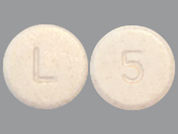Nityr
Nitisinone
What is Nityr used for?
Nitisinone is used to treat a certain inherited disorder (hereditary tyrosinemia type 1, also known as HT-1). HT-1 is usually discovered in infants and needs lifelong treatment. This condition is caused by a shortage of a certain natural substance that is needed to break down a nutrient (tyrosine) found in food. This effect causes a build-up of too much tyrosine and related substances in the liver. Nitisinone works by helping to prevent the formation and build-up of several toxic substances that cause damage to the liver, kidneys, and nervous system. This drug must be used along with a diet low in protein, tyrosine, and phenylalanine.
CHEMICAL NAME
DRUG TYPE
Enzyme DeficienciesNityr Prices
Searching for the lowest prices
Nityr Frequently Asked Questions
Read the Patient Information Leaflet if available from your pharmacist before you start taking nitisinone and each time you get a refill. If you have any questions, ask your doctor or pharmacist.
Take this medication by mouth as directed by your doctor, usually twice daily.
If you are taking the capsules, take them on an empty stomach at least 1 hour before or 2 hours after a meal. If you are unable to swallow the capsules, you may open the capsules and mix the contents in a small amount of water, formula, or apple sauce. Take the mixture right away.
If you are taking the suspension, you may take the suspension with or without food. Shake the bottle well before each dose. Carefully measure the dose using a special measuring device/spoon. Do not use a household spoon because you may not get the correct dose. When using an unopened bottle of suspension for the first time, remove it from the refrigerator and let it warm to room temperature for 30 to 60 minutes before use.
If you are taking the tablets, you may take the tablets with or without food. If you are unable to swallow the tablets, you may crush the tablets and mix them in a small amount of water or applesauce. Take the mixture right away. If you are using a special measuring device/syringe to prepare and give the tablets mixed with water, carefully follow the directions from the manufacturer. Ask your doctor or pharmacist if you have any questions.
The dosage is based on your medical condition, weight, and response to treatment. Your doctor may adjust your dose and schedule based on your response to treatment. Carefully follow your doctor's directions for taking this medication.
Take this medication regularly to get the most benefit from it. To help you remember, take it at the same time(s) each day.
It is very important that patients taking this medication follow a special diet low in protein, tyrosine, and phenylalanine. Consult your doctor, pharmacist, or dietician for more details. (See also Drug Interactions and Precautions sections.)
IMPORTANT: HOW TO USE THIS INFORMATION: This is a summary and does NOT have all possible information about this product. This information does not assure that this product is safe, effective, or appropriate for you. This information is not individual medical advice and does not substitute for the advice of your health care professional. Always ask your health care professional for complete information about this product and your specific health needs.

